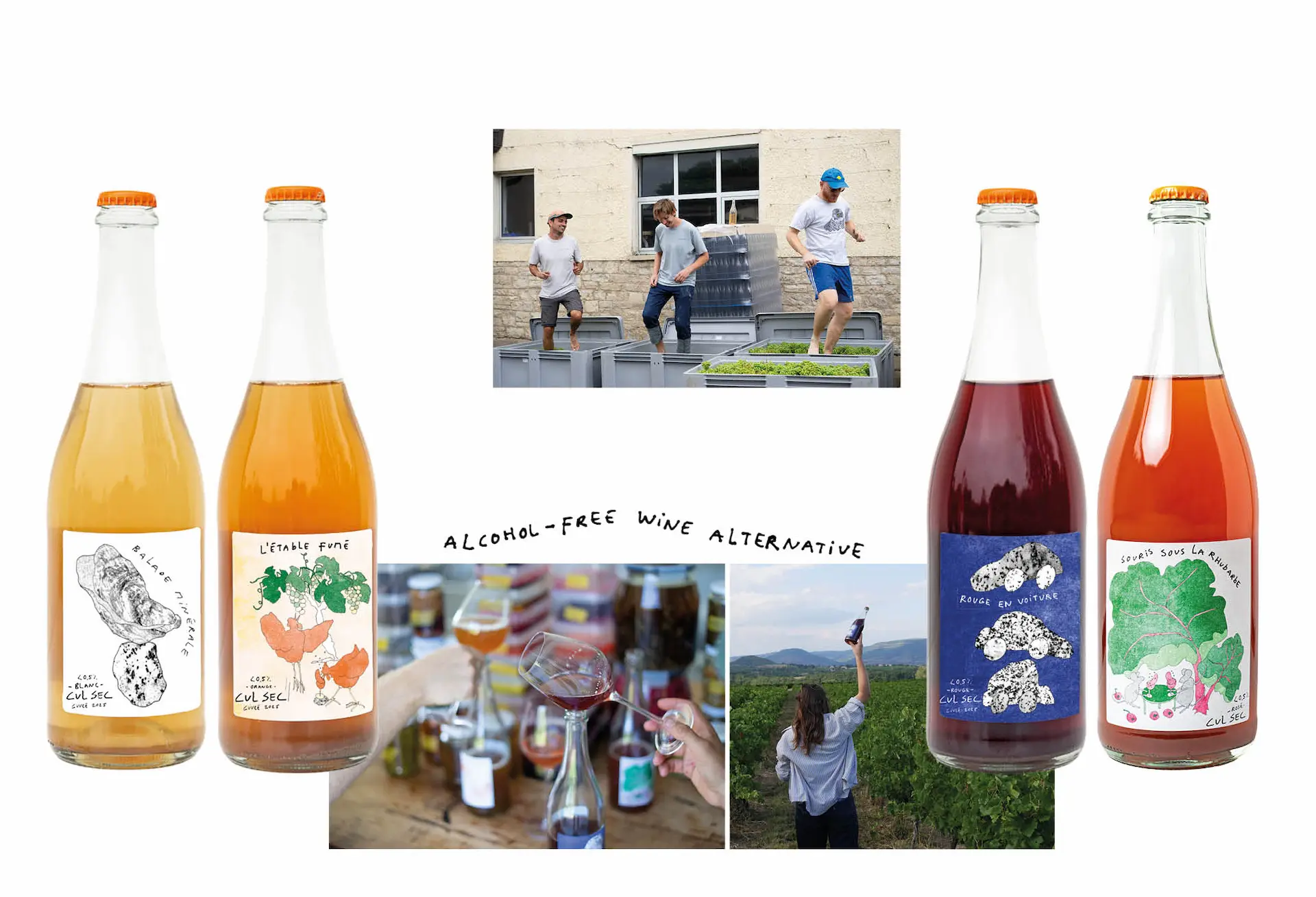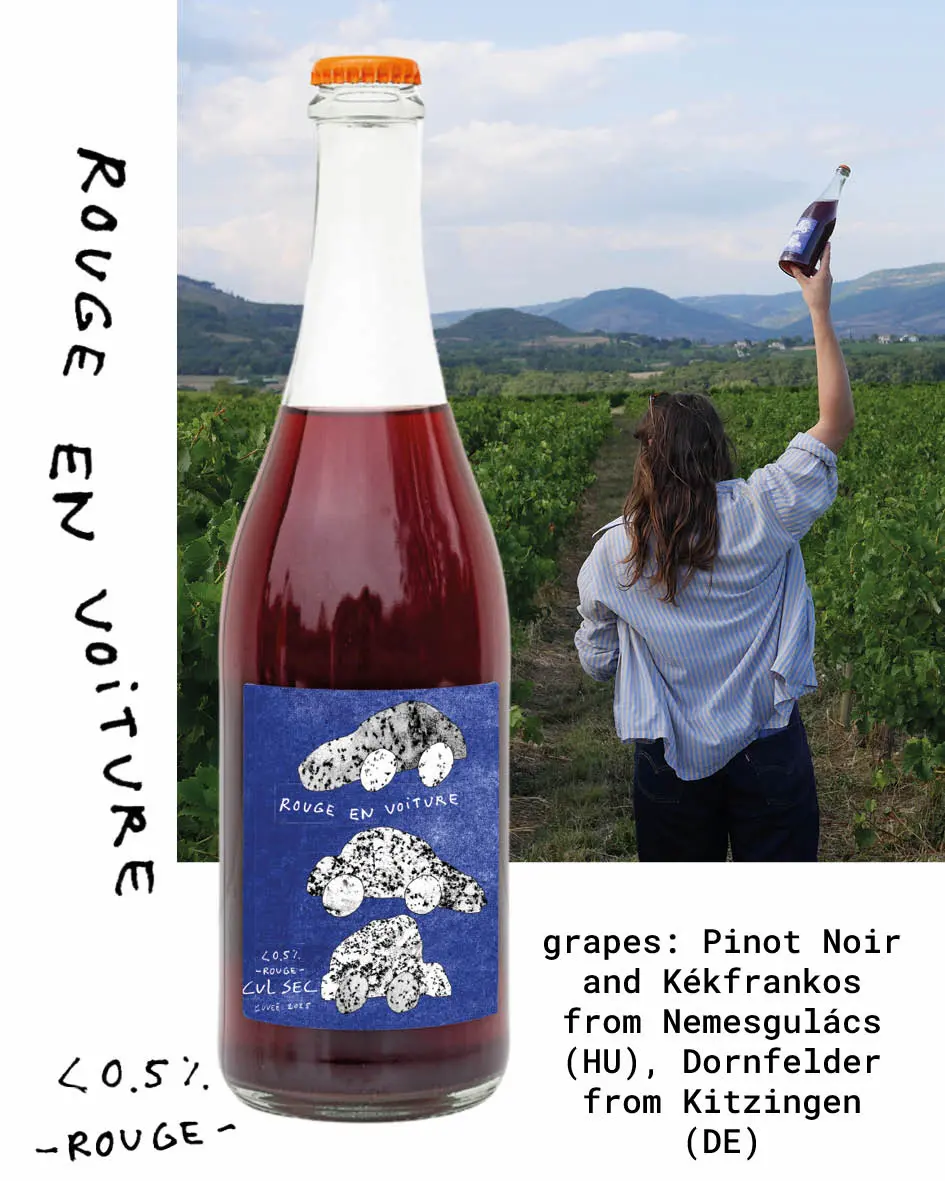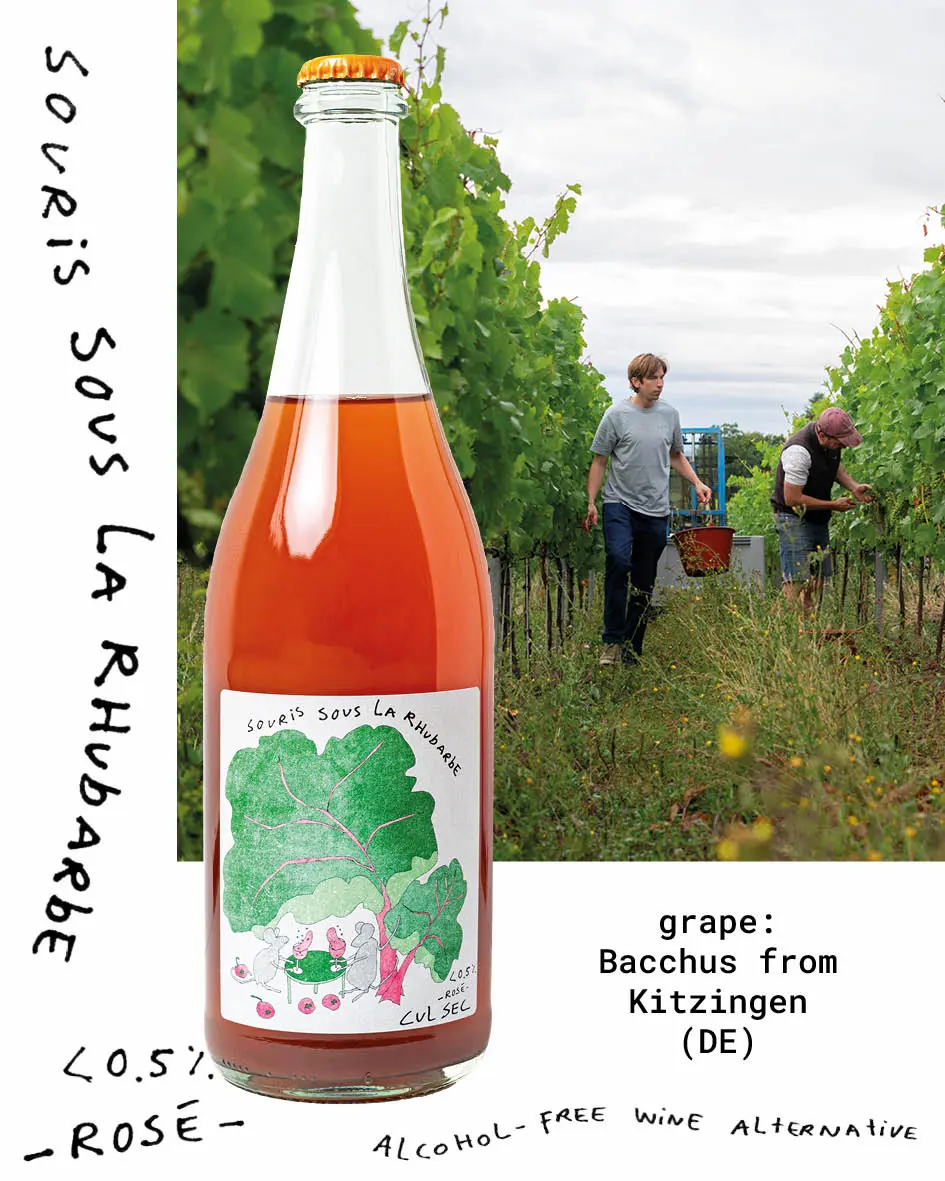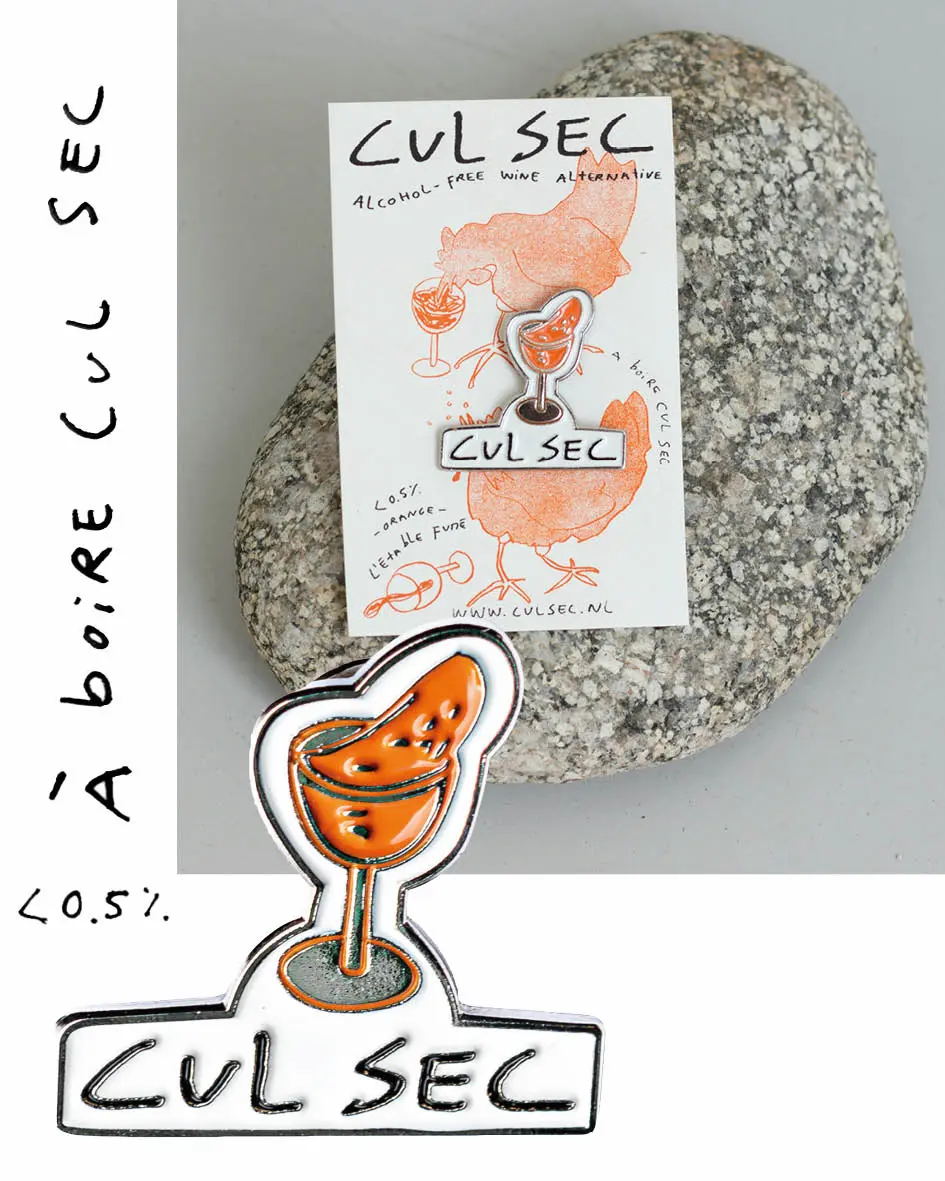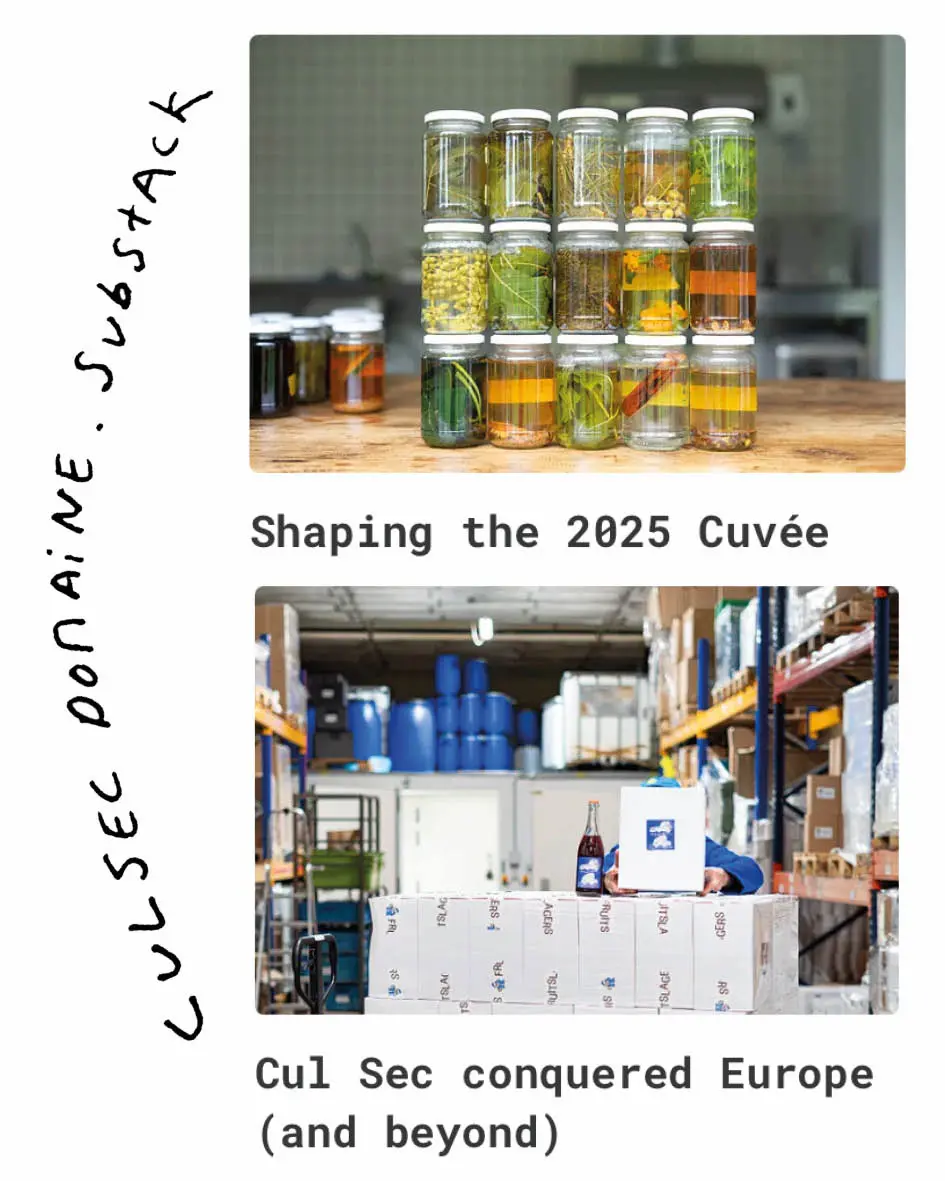
Cul Sec is the non-alcoholic alternative to wine, a maceration of wild herbs, wine grapes and fermentations. This bottle is full of old traditions combined with new techniques. Cuvée 2025 is a balance of ripe oxidized and unripe wine grapes full of fresh acidity and tannin. The makers searched all year in our landscape for wild flavor notes from the landscape; the mineral notes of the oyster shell, as chalky "terroir," different woods for tight tannins and, for example, oxidative notes of lacto-fermented fruits. With this palette of flavor, we are building 'Domaine Cul Sec,' an estate full of wildness and regeneration. Santé! For those seeking flavor and texture without promillage.
Products

cuvée 2025 is there!
Proudly we announce your: Cuvée 2025 is available! Interested to sell or serve in your restaurant? Send your message to:fruitslagers- This year we worked on new stuff-not really new recipes, but more like new ingredients. We've always started from ingredients, and the recipes are something that naturally emerge from them. It's not as if you "invent" a recipe, so to speak. This year we have many new ingredients. Our base is grapes, coming from new places, new harvests, and new pressing techniques. We experimented with all of these ingredients. For example, this year we use verjus, which means the acidity comes from unripe grapes. Last year, we relied more on gooseberry and Japanese quince for acidity. We explored the tannins that unripe grapes can give us, the sourness that comes from them, and all those different varieties, sourced from different places: some grapes from France (Ardèche), some harvested in Germany (Kitzingen), and some coming our way from Hungary.
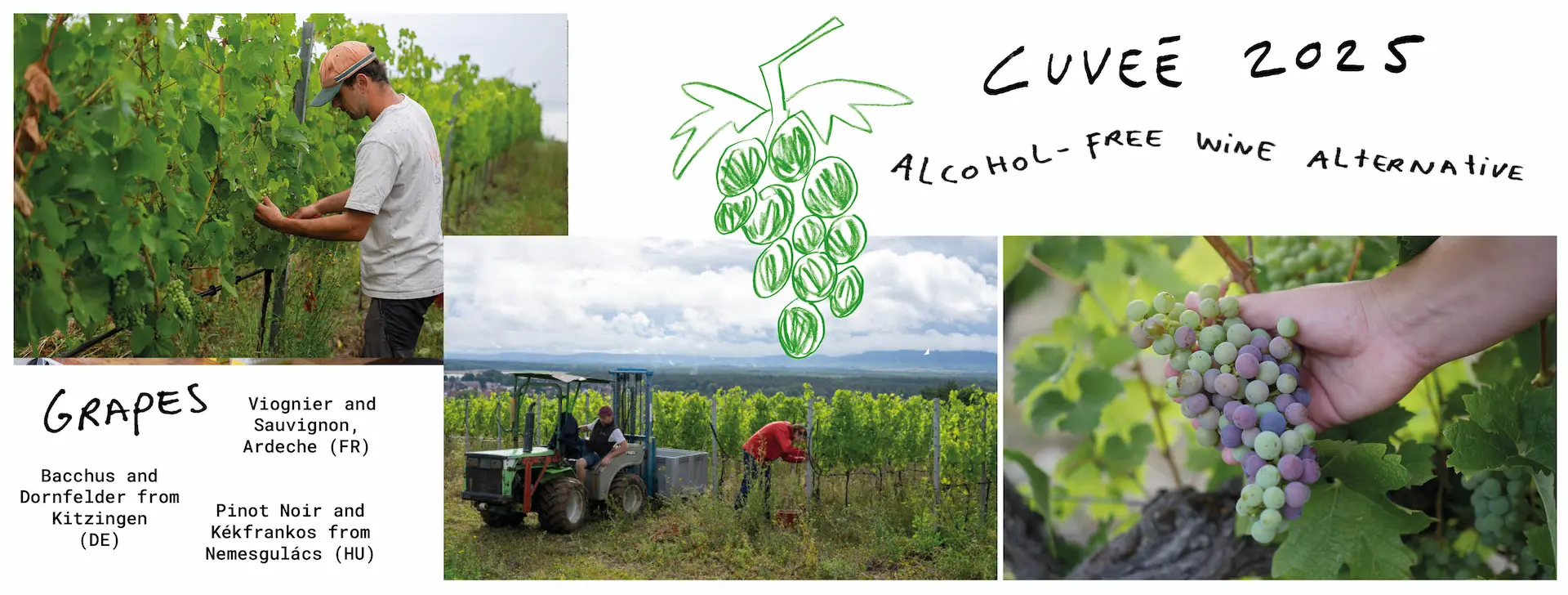
Grapes
For the 2025 cuvée, we toured Europe in search of the perfect grape for non-alcoholic. We found floral notes in Germany, fresh acids in Hungary and full, sweet grapes in the south of France. Among the biodynamic farmers we met, we also discovered the fresh acidity in unripe grapes. Farmers pick the unripe bunches to make room for sun-ripened bunches full of sugars. We make grateful use of what hangs in the winemaker's way: fresh verjuice from young grapes. A natural acid that lends itself perfectly to Cul Sec. In the Netherlands you can find more and more vineyards containing perhaps the perfect grape for non-alcoholic wine. You can already find them in this cuvée and we dream of increasing the Dutch organic grape cultivation with Cul Sec.

Alternative to wine
We missed the robust nonalcoholic flavors and textures found in the wild. For years, we played with the flavors from our wild landscape. Fermentation of roots, infusions of seeds, solutions of oyster shell: Cul sec creates a challenging terroir for the palate. With minerals and powerful ingredients, we create a full and complex texture and mouthfeel. A combination of long research and the playing field of fruitslagers in a bottle. A worthy alternative to wine, mindful of the flavors that surround us. For those seeking taste without promillage.
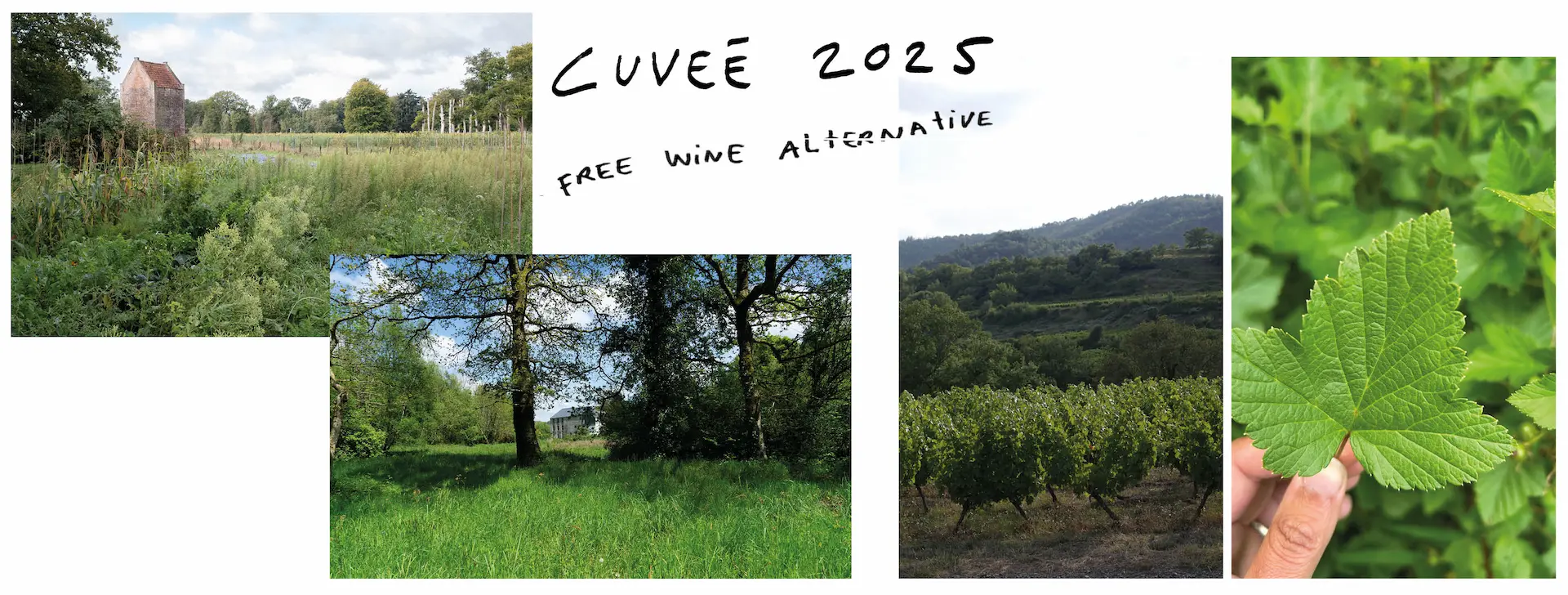
Landscape restoration and terroir
Our quest for flavor begins in the landscape around us. We are building a regenerative system in collaboration with farmers and growers. We translate the knowledge, attention and time they put into the ingredients into a complex product full of flavor and texture. The Dutch hay of herbs from L'etable Fume is grown at Schevichoven, the green aromas of blackcurrant leaf from De Nieuwe Bodem fill Rouge en Voiture and oak from Lanou Lanou provides the tannins. We like to be surprised by new varieties and let go of old traditions and new techniques in search of intense flavors, textures and mouthfeel. Drink Cul Sec for the recovery of our local landscape.
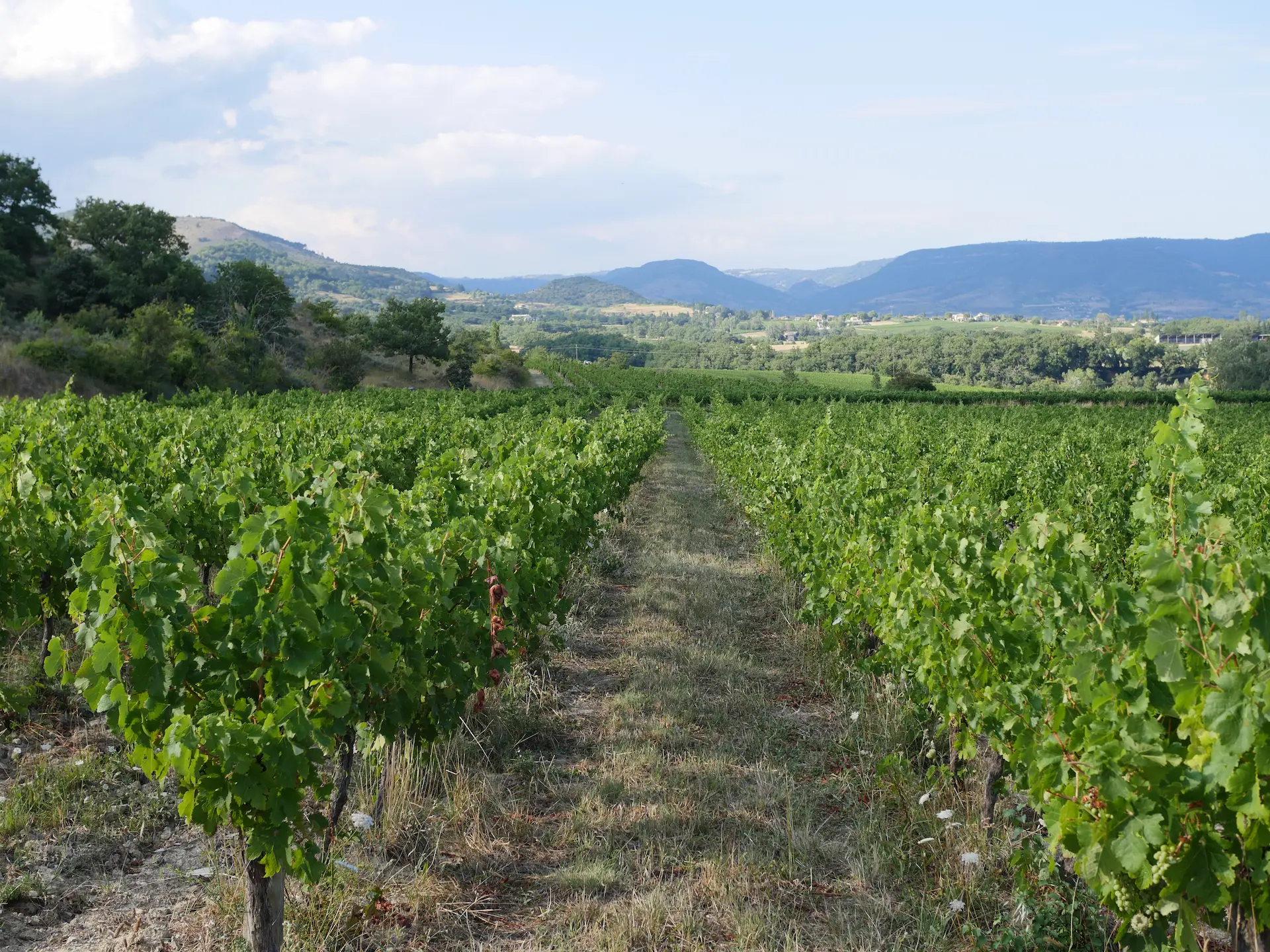
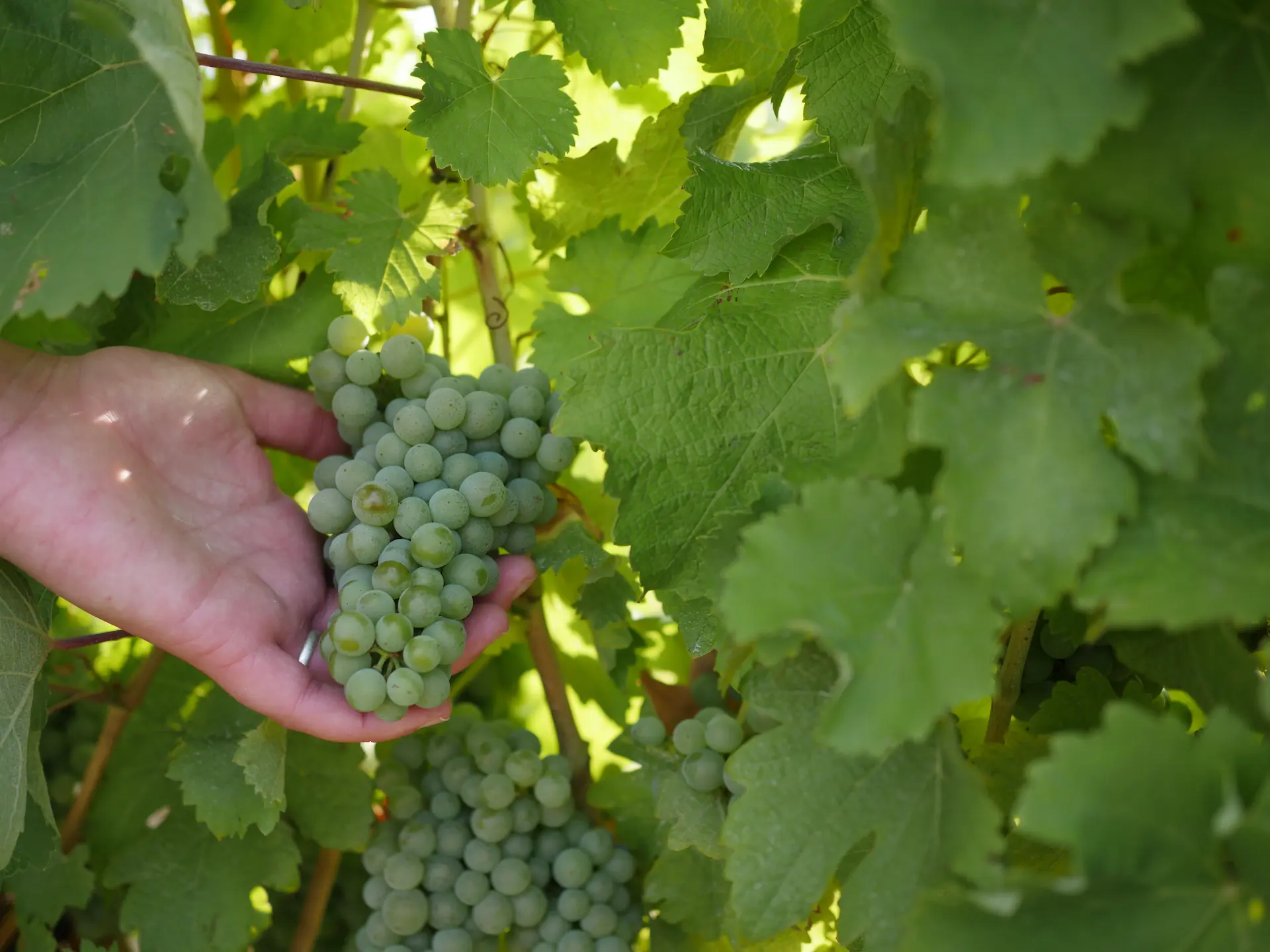

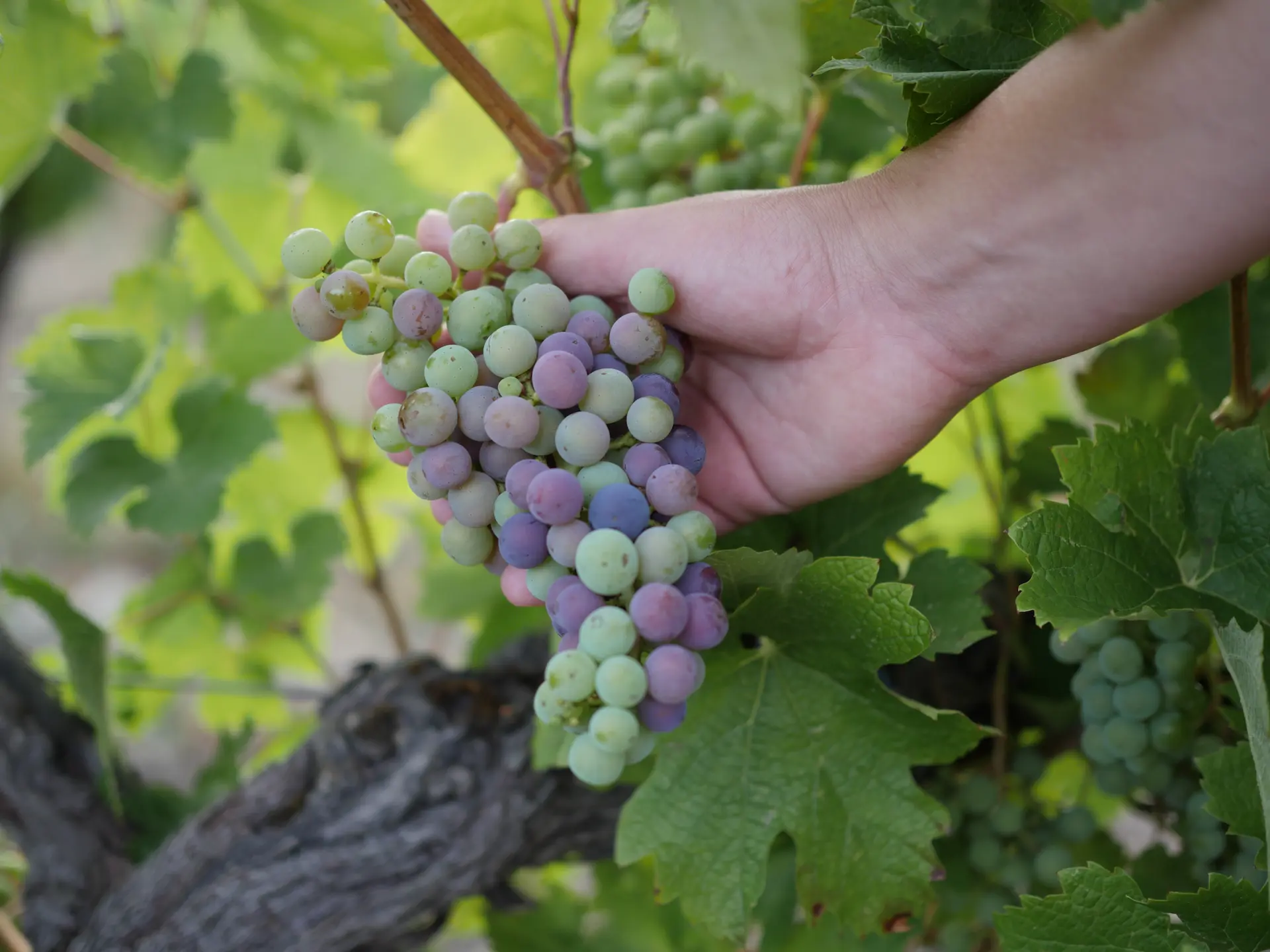
Land restoration
We are joining forces with biodynamic vintners in a search for the perfect grape for non-alcoholic wine, harvesting from food forests and are on an ongoing search for new flavors from our landscape. In this way, we not only work with the finest flavors, but also the landscape of the future. Grapes from Dassemus of Chaam, herbs from food forests Nieuwe Bodem and Schevichoven and apple cider vinegar from Elegast cider makers. The wilder the landscape, the more flavor.
Recipes

Tempeh au vin and L'étable Fumé
A plant-based alternative. Tempeh from the dutch krombek bean from boonzaak has a slightly salty taste and shows the versatility of tempeh. Therefore, tempeh combines well with salty flavors. The bean is one of the oldest Dutch bean varieties. Mainly grown in Friesland, Groningen & North Holland. Our come from the family smak. It is accompanied by a wine sauce based on the Yellow wine (vin jaune) and in the title a reference to the classic Coq au Vin, but vegetable!
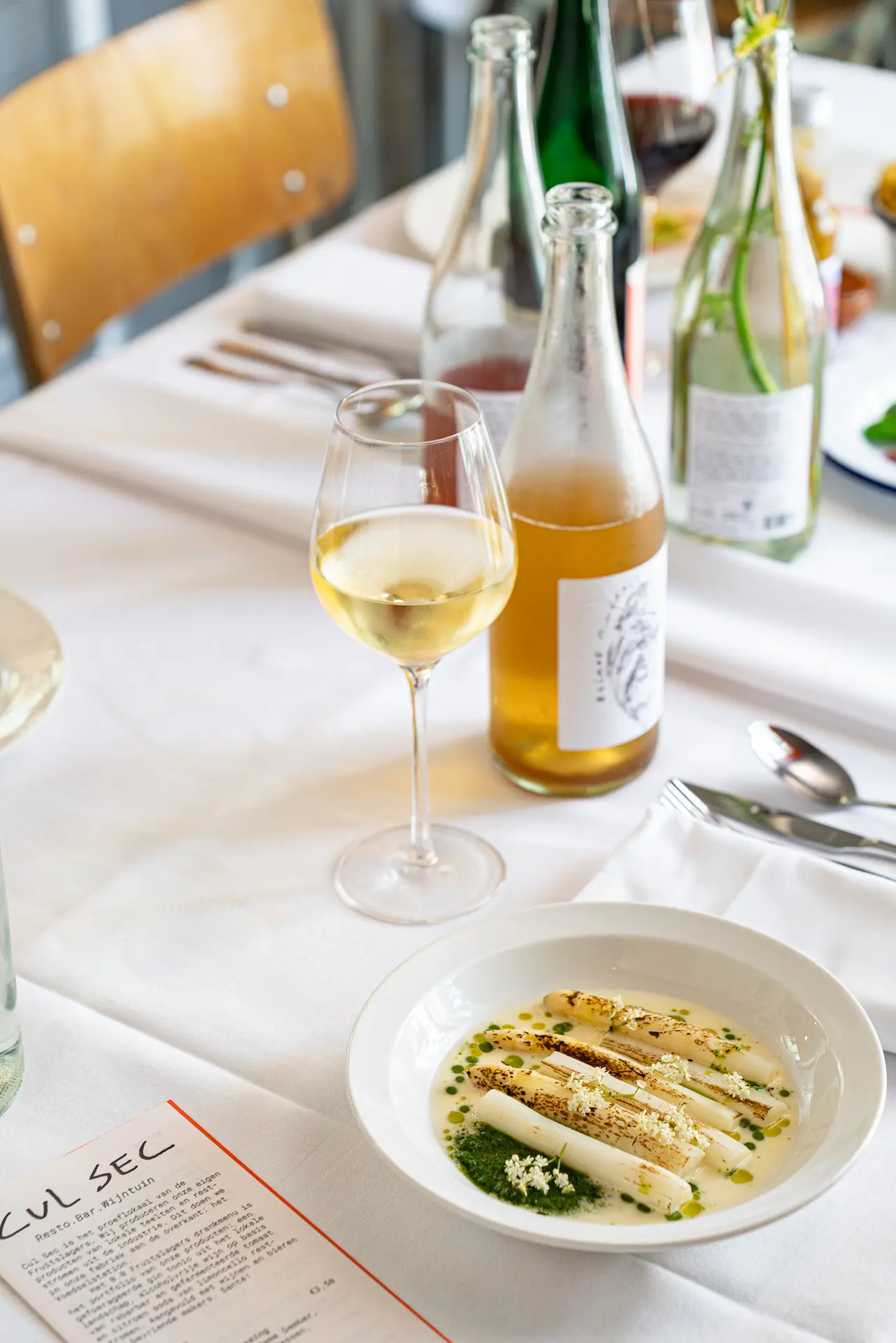
Blossom Season and Balade Minérale
The season of white asparagus accompanies a parade of blossoms. From the early cherry, hawthorn blossoms, badger garlic flowers to mustard flowers, borage and the first roses. The beurre blanc of magnolia has just been succeeded by the last elder blossoms. We catch the flavors on vinegar, sugar, alcohol, oil or on salt. To use for another year. Because flowers are not only beautiful but also contain special flavors that we normally import.

Tomato season and Souris sous la Rhubarbe
Several perfectly ripe tomatoes, raw, pickled in a strawberry vinegar, and one fermented in the form of gazpacho. The tomatoes came from sprout greens. Topped with some Pangrattato from yesterday's bread, Mexican tarragon (yes, from the Netherlands) and elderberry capers. Can be a little spicy.
Contact
Thank you we will contact you as soon as possible
